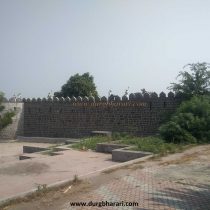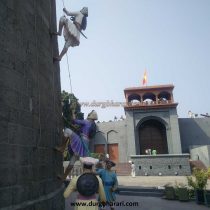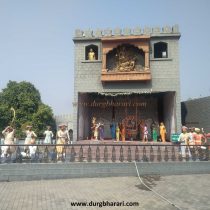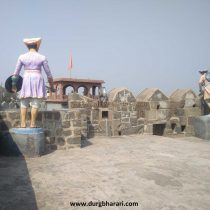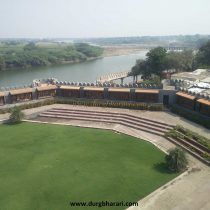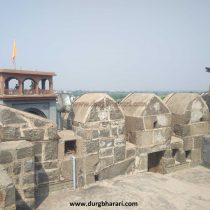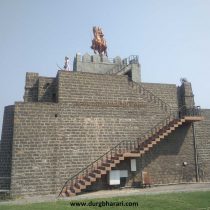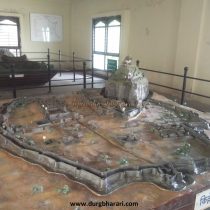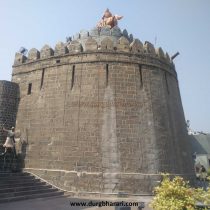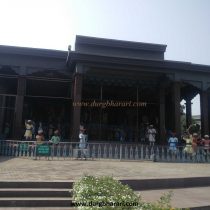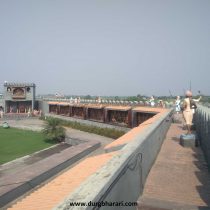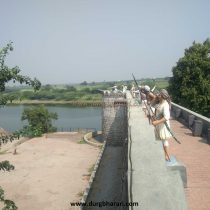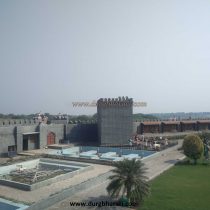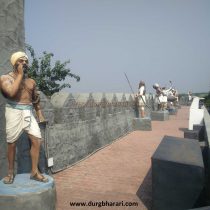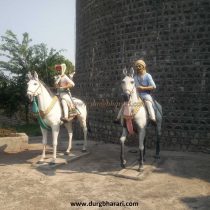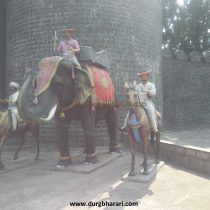AKLUJ
TYPE : GROUND FORT
DISTRICT : SOLAPUR
HEIGHT : 0
GRADE : EASY
Akluj is an important city in Malshiras taluka of Solapur district which is connected to all the cities by road. The Pune-Solapur road has a fork from Indapur to Akluj and the Pune-Akluj distance is 160 km. The ground fort of Akluj stands on the banks of river Nira in this city. Fountains, greenery, and flowers have been planted in various places in the fort and under the guidance of Shivshahir Babasaheb Purandare, sculptors Shri Dinkarrao Thopte and Avinash Thopte have erected a magnificent ShivSrishti in the fort. The Mohite Patil family has made special efforts to renovate the fort and build ShivSrishti. While renovating the fort, the new construction has been balanced without affecting the original construction. The entry fee of the fort is Rs. 20 / - for adults and Rs. 15 / - for children. You can see the fort from 10 am to 6 pm.
...
Shivsrushti on the fort is the main attraction here and a biography of Chhatrapati Shivaji Maharaj has been erected there through sculptures and murals. While visiting in the fort, the standard of living on the fort we feel is from the medieval period. In front of the main entrance on the east side of the fort, fiber elephants and Maratha soldiers are sitting on horses. On the upper side, there are statues of various musicians in the town hall. Upon entering the fort, soldiers performing different activities are seen on the ramparts in their traditional attire, including guards, artillerymen, torchbearers, archers, and Ramoshi. A bastion on the river bank has the arrangement to pull the water directly from the river. Inside the ramparts, there are a total of 20 fiber sculptures based on the life of Shivaji Maharaj, of which Shiva's birth and coronation ceremonies are eye-opening. There is a huge equestrian statue of Shivaji Maharaj on the watchtower in the center of the fort. As you walk up the stairs, you see a barn built inside the bastion. From this highest point of the fort, one can see the entire fort and its surroundings at a glance. On the lower part of this bastion, on one side, some soldiers climb the tower with ropes, while on the other side, Ramoshi guard is sitting on by lighting a fire. The total area of the fort is 2.5 acres and ten bastions can be seen in the ramparts. There are six porches in the original construction of the ramparts on the river bank & the remains found in the excavation are kept in this porches. From here there is a small gate to the riverside but it is currently closed. The water tank supplying water to the fort has been converted into a fountain. In a gallery on the right side of the entrance, the replicas of important forts in the Maharashtra namely Raigad, Rajgad, Sinhagad, Torna, Purandar, Pratapgad, Shivneri, Devagiri, Vijaydurg and Sindhudurg take you on a tour of these forts. Exiting the fort, one can see the riverbank, the ghats, the bastions of the fort, the hero stones used in the construction of the ramparts, the Nira river that turns the fort, and other ancient relics. Akluj is named after the village deity Shri Aklai Devi. It is mentioned that the city and fort of Akluj were built by the Singhan king of the Yadav dynasty in 1211. The fort was ruled by Bahamani, Adilshahi, Mughals and then Marathas. During the Mughal period, Bahadurgarh and this fort near Daund were under the rule of Aurangzeb's Subheddar Bahadur Khan of Deccan. Later it is recorded that Ranmastkhan became the fort keeper here. It is said that Diller Khan and Sambhaji Maharaj lived in the fort for four months in 1679. Aurangzeb stayed in Akluj fort from 14th December 1688 to 15th February 1689. It is recorded in the Maharashtra Gazetteer that he changed the name of Akluj to Adaspur for celebrating happiness when he came to know that Chhatrapati Sambhaji Maharaj was captured by Mukarrabkhan at Sangameshwar. The second Bajirao Peshwa lived here for three months after the British overthrew the Peshwa. Apart from this, it is recorded that the British Governor Lord Dalhousie also stayed at this place for some time.
© Suresh Nimbalkar

